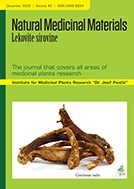College of Bioscience, Federal University of Agriculture, Abeokuta , Ogun State , Nigeria
Biomedicinal Research Centre, Forestry Research Institute of Nigeria Nigeria
Biomedicinal Research Centre, Forestry Research Institute of Nigeria Nigeria
Biomedicinal Research Centre, Forestry Research Institute of Nigeria Nigeria
This study investigated the activity of aqueous and corn steep liquor (CSL) extracts of Ficus exaperasta, Azadirachta indica and Annona muricata against Candida spp isolated from high vagina swab samples. Phytochemical screening of the plants was done using standard methods, the antifungal activity of the plant’s extracts and standard drugs were tested against isolates of Candida spp using the agar well diffusion method; the minimum inhibitory concentration (MIC) and minimum fungicidal concentration (MFC) were also determined using microdilution standardized techniques. Phytochemical screening of the aqueous and CSL extracts of the plants revealed the presence of tannin, saponin, phenols and flavonoids. Among the five Candida strains, the zone of inhibition (ZI) produced by the plant extracts against C. kefyra shows a range of 6-28 mm; C. kruseia: 5-25 mm; C. albican: 0-18 mm; C. kefyrb: 0-27 mm; while, C. kruseib ZI: 0-18 mm. CSL extract had higher inhibitory action compared with aqueous extract while F. exasperata and A. muricata gave better antifungal activity against the tested Candida strains. The MIC of the aqueous and CSL extracts of the F. exasperata ranged between 6.25-12.5 mg/ml; A. muricata: 3.125-12.5mg/ml, while the aqueous and CSL extracts of A. indica was found to have no activity at all the tested concentrations against C. albican, C. kruseiaand C. kruseib, similar observation for the MFC. This study proved the antifungal efficacy of aqueous and CSL extracts of F. exasperata, A. muricata, and A. indica against isolates of Candida species which are usually implicated in candidiasis.
This is an open access article distributed under the Creative Commons Attribution License which permits unrestricted use, distribution, and reproduction in any medium, provided the original work is properly cited.

The statements, opinions and data contained in the journal are solely those of the individual authors and contributors and not of the publisher and the editor(s). We stay neutral with regard to jurisdictional claims in published maps and institutional affiliations.